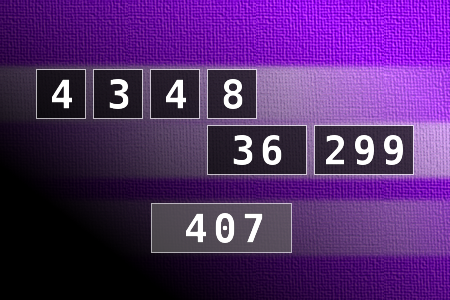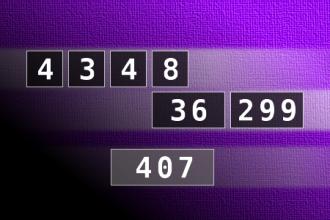Calculate the number 407
NUMBERMANIA: Calculate the number 407 using numbers [4, 3, 4, 8, 36, 299] and basic arithmetic operations (+, -, *, /). Each of the numbers can be used only once.Correct answers: 27
The first user who solved this task is Eugenio G. F. de Kereki.
#brainteasers #math #numbermania


